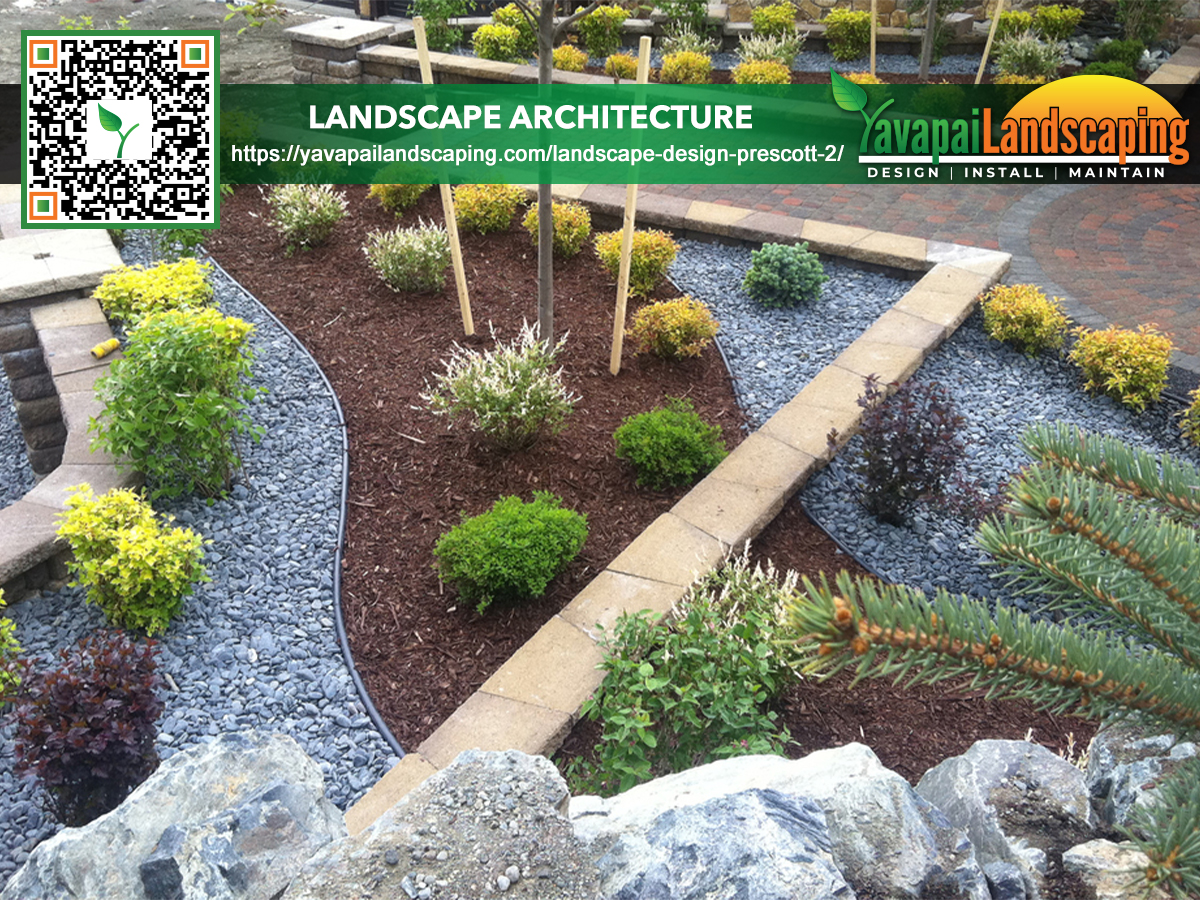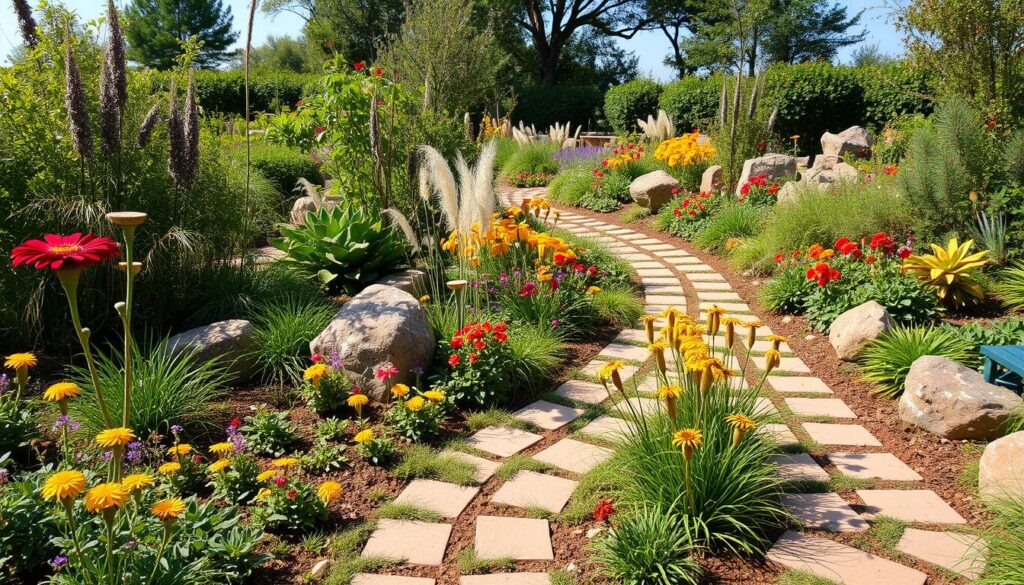
Creating a wildlife-friendly landscape is becoming more popular. It combines beauty with helping local ecosystems. Homeowners and designers see the value in outdoor spaces that support wildlife and look good.
This approach to garden design is more than just looks. It recognizes our yards’ important role in protecting local plants and animals.
Using native plants and careful design, we can create spaces that benefit wildlife and showcase nature’s beauty. This mix of looks and function is key to wildlife-friendly design. It allows us to enjoy beautiful outdoor areas while helping our local environments.
Key Takeaways
- Wildlife-friendly landscapes blend beauty with ecological benefits
- Native plants play a crucial role in supporting local ecosystems
- Sustainable landscaping practices enhance biodiversity
- Thoughtful design can create visually appealing, eco-friendly gardens
- Balancing aesthetics and ecology benefits both homeowners and wildlife

Understanding the Principles of Wildlife-Friendly Landscape Design
Wildlife-friendly landscape design is about beauty and nature. It makes gardens that help local ecosystems and look great. Let’s look at the main ideas behind these designs.
Defining Ecosystem-Conscious Landscaping
Ecosystem-conscious landscaping aims to create natural spaces. It supports wildlife by offering food, shelter, and places to breed. It uses native plants, saves water, and avoids harmful chemicals.
The Importance of Biodiversity in Garden Spaces
Biodiversity is key to a healthy garden. Gardens with many plants attract different wildlife, from bugs to birds. This variety helps gardens fight pests and diseases. It also helps restore natural habitats lost to cities.
Key Elements of Wildlife-Friendly Environments
To make a wildlife-friendly garden, include these important parts:
- Native plants that offer food and shelter
- Water sources like ponds or birdbaths
- Varied plant heights for different habitats
- Undisturbed areas for nesting and hibernation
- Limited use of pesticides to protect beneficial insects
Using these ideas, you can create a lovely and good garden for wildlife. This way of landscaping helps the ecosystem and makes a great outdoor space.
Incorporating Native Plants for Beauty and Ecological Benefits
Native plants add beauty and help the environment. They fit perfectly in local landscapes, making them great for gardens that are good for the planet.
Pollinator-friendly plants are key in gardens that help wildlife. Flowers like coneflowers and black-eyed susans attract bees and butterflies. They make your garden colorful and support local ecosystems.
Drought-resistant plants are important for gardens that save water. Plants like yarrow and prairie dropseed need less water, are good for the planet, and look great in gardens.
- Choose a variety of native plants to support biodiversity
- Include flowering species that bloom at different times
- Select plants with diverse heights and textures for visual interest
Native plants make your garden beautiful and good for the planet. They provide food and shelter for local animals. They also need less care than other plants. Use native plants to make a garden that’s in harmony with nature. Elevate your understanding by reading this exceptional piece.
Creating Habitat Zones: From Water Features to Nesting Areas
Turning your garden into a wildlife home requires careful planning. By setting up different habitat zones, you can attract many creatures. Let’s see how to make these areas welcoming to wildlife.
Designing Wildlife-Friendly Water Sources
Water features are vital for wildlife. Bird baths give birds a place to drink and bathe. Put them at different heights for various birds.
Consider a small pond or stream for a natural look. These can also be homes for amphibians and insects.
Establishing Diverse Plant Layers for Habitat
Layered plants are crucial for a healthy ecosystem. Begin with ground cover, then add shrubs and small trees. This setup mirrors natural habitats and meets many wildlife needs.
Make butterfly gardens with flowers that attract pollinators. Pick native plants that bloom at different times. This ensures food all year.
Incorporating Natural Nesting and Shelter Spaces
Wildlife corridors link your garden’s areas, letting animals move safely. Use dense shrubs or tall grasses for these paths. Add natural materials like logs, rock piles, and leaf litter for shelter and nests.
Birdhouses and bat boxes can also offer nesting spots. They help local wildlife find homes.
- Install bird baths at different heights
- Plant layered vegetation from ground cover to trees
- Design butterfly gardens with diverse, native plants
- Create wildlife corridors using shrubs and grasses
- Provide natural materials for shelter and nesting
Balancing Hardscaping with Natural Elements
Creating a wildlife-friendly landscape doesn’t mean giving up style or function. Mixing hardscaping with natural elements allows you to find a balance that is good for both people and wildlife.

Permeable paving is a smart choice. It lets water soak through, reducing runoff and helping the water cycle. It’s great for driveways, patios, and walkways, looking sleek and eco-friendly.
Green roofs are another smart mix of nature and architecture. They keep buildings cool, save energy, and offer homes for insects and birds. Green roofs bring beauty and biodiversity to your yard, whether a small shed or a big building.
Wildlife-friendly fencing is crucial for boundaries. Pick designs that let small animals through but keep privacy. Natural materials like wood or stone fit well with your garden’s look and let wildlife move through safely.
- Use recycled materials for hardscaping elements
- Incorporate living walls to maximize green space
- Choose light-colored pavers to reduce heat absorption
By carefully adding these elements, you can make a beautiful outdoor space that helps local ecosystems. Remember, even small changes can help create a thriving wildlife habitat in your backyard.
Sustainable Maintenance Practices for Wildlife-Friendly Landscapes
To maintain a wildlife-friendly landscape, plant health, and ecosystem support must be carefully considered. Using sustainable methods helps create a habitat that’s good for plants and animals alike.
Organic Pest Management Techniques
Integrated pest management is a natural way to deal with pests. It stops problems before they start and uses good bugs to fight bad ones. By planting different types of plants, you attract bugs that eat pests, cutting down on harmful chemicals.
Water Conservation Strategies
Rainwater harvesting is a green way to save water in your garden. Set up rain barrels to catch roof water, giving your plants free water. Mulch helps keep the soil moist and groups plants by their water needs to save water.
Seasonal Care for Wildlife Habitats
Composting garden waste makes soil full of nutrients, helping plants grow and keeping soil healthy. Don’t clean up your yard too much in fall and winter to give animals a place to hide. Also, don’t prune too much in spring to protect birds and bugs.
- Use native plants adapted to local climate conditions
- Create brush piles for small animal habitats
- Minimize night lighting to protect nocturnal species
Using these green practices, your wildlife-friendly garden will grow and thrive all year. It will be beautiful and good for the environment.
Maximizing Aesthetic Appeal in Eco-Friendly Garden Design
Creating a wildlife-friendly landscape doesn’t mean you have to sacrifice beauty. Naturalistic design can make your garden look great while helping local ecosystems. By using color theory, you can pick plants that look amazing and attract wildlife.
Texture variety is important for eco-friendly garden looks. Mix plants with smooth leaves with those that have rough or feathery textures. This adds depth and interest. It also gives insects and small animals different places to live.
It’s important to have seasonal interest in your wildlife garden. Choose plants that change colors, bloom, or have interesting shapes all year. This will keep your garden looking good and provide food for local animals all year.
A well-designed, eco-friendly garden is both beautiful and useful. By carefully choosing your design, you can create a space that is great for wildlife and looks amazing in your neighborhood.
Yavapai Landscaping Prescott offers free quotes for landscaping and tree services in Prescott and its surrounding areas. This includes tree removal, trimming, stump grinding, land clearing, storm cleaning, and emergency tree service.
Design Beautiful, Eco-Friendly Landscapes
Q: What is wildlife-friendly landscape design?
A: Wildlife-friendly landscape design blends beauty with nature. It makes outdoor spaces that help local animals and look good. This approach supports many species and helps the environment.
Q: Why is biodiversity important in garden spaces?
A: Biodiversity is key for healthy ecosystems. Gardens with many plants and animals help many species thrive, including bees, birds, and small mammals.
Q: What are some key elements of wildlife-friendly environments?
A: Important parts of wildlife-friendly areas include native plants and water features. They also need different plant layers, places for animals to nest, and paths for animals to move.
Q: Why should I choose native plants for my wildlife-friendly landscape?
A: Native plants thrive in local weather and soil. They require less care and water than other plants and provide food and shelter to local animals.
Q: How can I incorporate wildlife-friendly water sources into my landscape?
A: Adding water features like bird baths or small ponds attracts many animals. Make sure these areas are easy for birds and small creatures to access.
Q: What are some sustainable maintenance practices for wildlife-friendly landscapes?
A: Good care includes using natural pest control and saving water. Composting and caring for your garden seasonally also help. This keeps your garden healthy for animals.
Q: How can I maximize aesthetic appeal in an eco-friendly garden design?
A: Use natural designs and choose colors and textures that work well together. Add things that interest you all year. This makes your garden beautiful and good for the planet.
